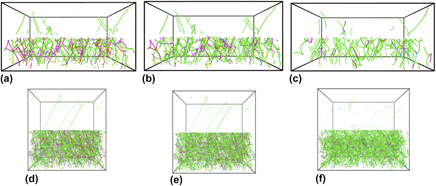Article contents
The effect of size and composition on the strength and hardening of Cu–Ni/Nb nanoscale metallic composites
Published online by Cambridge University Press: 13 June 2017
Abstract

Nanoscale metallic material composites consisting of bilayer and trilayer systems of two and three different metallic alternating layers show significant gains in hardness over monolithic single phase films. One of the main applications of these composites can be as protective coatings to technical components to increase their lifespan acting as a mechanical barrier to the carriers of permanent deformation. In this work, we study the strength of bilayer structures made of alternating layers of niobium (Nb) and copper–nickel (Cu–Ni) alloys. The effect of the layer size and composition on strength and hardening as well as the effect of the metal–alloy interface on the dislocation motion is investigated. The simulations reveal a close relationship between the atomic composition of the alloy and the hardening of the film. The results are also compared with experimental findings on nanopillars made of similar structures, and strong similarities are revealed and discussed.
Keywords
- Type
- Invited Papers
- Information
- Copyright
- Copyright © Materials Research Society 2017
Footnotes
Contributing Editor: Gary L. Messing
References
REFERENCES
- 4
- Cited by





